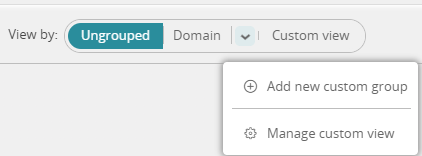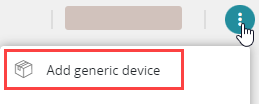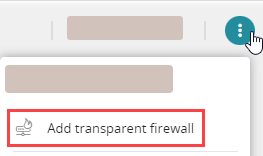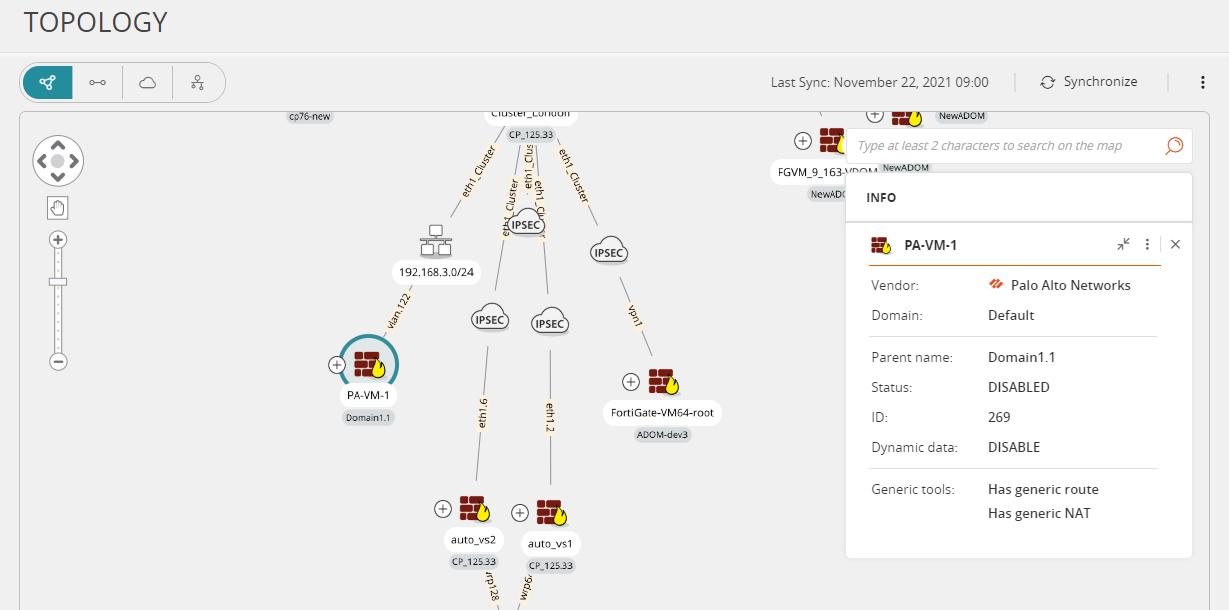On This Page
Interactive Map
The interactive map, also known as the topology map or the network map, is a dynamic map of your monitored devices and the subnets to which they are connected.
The map is created using Topology Intelligence.
You can enter the details of a network traffic flow to see the path of the traffic on the map.
The interactive map includes:
|
Object |
Description |
Actions |
|---|---|---|
|
Cloud
|
A group of subnets for which a device routes traffic through an interface to an unknown gateway. The default name of the cloud includes the gateway listed for the routes. |
Right click a cloud to see the known subnets that are in the cloud. For a cloud, you can:
|
|
|
Public cloud: Azure Vnet, AWS VPC, or NSX-T. |
Right-click a public cloud to display its associated routes and subnets. Click |
|
|
A network device that is not monitored by SecureTrack but is included in topology calculations. |
Click on a generic device to see its interfaces, IP addresses and routing table. For a generic device you can:
|
|
Monitored Device
|
A network device that is monitored by SecureTrack. The names of the interfaces are shown on the connections from the device. |
Click on a device to see its interfaces, IP addresses and routing table. |
|
Subnet
|
A network subnet that is connected to at least one device interface. |
Click on a subnet to see the device interfaces that are connected to it and the IP addresses of the interfaces. For a subnet, you can:
|
|
Subnet and Cloud Groups
|
A group of subnets or clouds that are all only connected to one monitored device. |
Click on |
|
Connectivity between virtual systems
|
Connectivity between two virtual systems (such as virtual firewalls for Panorama) |
None |
|
|
F5 devices |
|
|
|
A connection that is established over IPSEC. |
None |
|
|
Policy-based routing (PBR) for Cisco IOS routers |
None |
|
|
A peering connection: Azure, AWS, GCP
|
None |
|
|
Transit Gateway: a service that enables you to connect thousands of Amazon Virtual Private Clouds (Amazon VPCs) and their on-premises networks using a single gateway |
None |
|
|
MPLS network infrastructure. Any device that has MPLS participation will be connected to the MPLS cloud. |
None |
|
|
Cisco ACI |
Right-click a Cisco ACI device to display its associated routes and subnets. Click |
Prerequisites
- Make sure that all of the devices that impact your topology are monitored by SecureTrack.
For devices that are not monitored, you can add a generic device to represent the device with its interfaces and routes.
-
Permissions
Access to the map is given only to users with sufficient permissions. The menu option Map
 will appear only for these users:
will appear only for these users:- Administrators
- Super Administrators
- Multi-domain administrators, when a domain context is selected and not when All Domains is selected.
What can I do on this page?
-
View the Interactive Map - Click
 to view and navigate the interactive map.
to view and navigate the interactive map. -
View device details - Click
 to expand and
to expand and  to collapse device details.
to collapse device details. -
View cloud suggestions: Click the
 link in JOIN CLOUDS
link in JOIN CLOUDS -
Investigate traffic paths: Click
 to investigate a specific traffic path or to Diagnose Broken Traffic Paths.
to investigate a specific traffic path or to Diagnose Broken Traffic Paths. -
Join or split subnets: Click
 to join or split subnets
to join or split subnets -
Join or split clouds: Click
 to join or split clouds
to join or split clouds -
-
Grouped by Domain: Click Domain to group the devices in the map by domain. Relevant for users with Super Admin permissions.
-
Grouped by custom views: Click Custom View to group the devices in the map by custom views
-
-
Create and manage custom views for grouping devices: Click
 and select whether to add a new custom group or manage the custom views.
and select whether to add a new custom group or manage the custom views.
-
Refresh the map: Click
 to synchronize the topology for the interactive map
to synchronize the topology for the interactive map -
Add generic device: Click Add generic device to enter the details for a generic device

- Add Transparent Devices: Click Add transparent firewall to enter details for transparent devices

-
Export interactive map: Click one of the export options: PNG, PDF, Visio

-
Multi-domain only - Click to switch domain contexts and view the devices for a specific domain. Users with "Super admin" permission can also view the Global domain context (see Multi-Domain Management).
Page Controls
Use these controls to navigate in the map page.
|
Control |
Description |
|---|---|

|
Use the arrows to pan around the map, sliding the view up, down, right or left. |
 / /  |
Use the hand to slide the map. Click the hand to toggle to the arrow, which you use to highlight a group of objects in the map. |

|
Use the slider or +/- buttons to control the zoom level of the map. |
How Do I Get Here?
In SecureTrack, click Map ![]() .
.


 to see the subnets.
to see the subnets.











